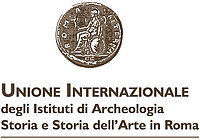PORTA_NOCERA. Pompeii - excavation of the Porta Nocera necropolis (2017-2021): archaeology of death and social structures)
- Section: Antiquity
- Directors: William Van Andringa, Director of Studies, École Pratique des Hautes Études; Thomas Creissen, Director of Éveha International; Henri Duday, Emeritus Research Director CNRS, University of Bordeaux
Presentation
1) Summary of the programme
The Porta Nocera programme will study the processes of creation and development of a Roman funerary landscape (1st century BC - 1st century AD) from one of the well-preserved necropolises of Pompeii, located at the Nocera Gate. The practices of cremation, the different moments in the creation of the tomb and the structures which define it, then the funeral procession, finally the forms and creation of memory organized around the dead. These indicators open up an unprecedented approach to social structures in a Roman city, especially the family. This investigation through funeral complexes concerns all individuals, in particular those whom the social order rejected on the margins such as slaves and children who died in infancy.
2) Interdisciplinary research on the genesis of a funeral landscape and funeral practices
A first study programme (2003-2007) resulted in the publication of the results in two volumes :
Van Andringa W., Duday H., Lepetz S. et al., Mourir à Pompéi : fouille d’un quartier funéraire de la nécropole romaine de Porta Nocera (2003-2007), 2 vol., Collection of the École française de Rome, 2013, 1451 p.
This large-scale study on a small set of tombs created new questions concerning the evolution and management of a necropolis in Roman times and, thus also mirrored the organization of urban society. The detailed excavation of the structures (burials, cremation areas, necrosols, road) also allows new methodological developments on the archaeology of funeral practices. It also gives the study of burned human remains a new impetus, with a much more precise perception of cremation practices or even a better biological knowledge of the populations concerned. In addition to the new scientific perspectives, the programme aims to develop a training component in funeral archaeology through an annual call for applications.
Keywords
Roman necropolis; study of graves; archaeothanatology; funeral archaeology; funeral practices; Pompeii; urban outskirts
Links
- Excavation campaigns at Porta Nocera (Pompeii) in the "Chronique des activités archéologiques de l'École française de Rome"
- Excavation campaigns at Pompeii in the "Chronique des activités archéologiques de l'École française de Rome"
- Website of the programme Porta Nocera
- Facebook page of the programme Porta Nocera
- Video report of the 2016 excavation campaign
Partners
- École française de Rome
- Parco archeologico di Pompei
- École Pratique des Hautes Études
- UMR 8546 CNRS/PSL - AOrOc
- Institut Universitaire de France
- Société archéologique Éveha international
- ARPAMED (endowment fund for archaeology and heritage in the Mediterranean)
Calendar
There will be an annual study campaign up to the publication of the manuscript, scheduled for 2021. An excavation report presenting the stratigraphic analysis and the graphic documentation is deposited in the partner institutions at the end of each campaign, as well as all the excavation data, which is archived.
2017
August 21 - September 30, 2018: Excavation and study of finds
August 27 - September 3, 2018: Training in the study of cremations (H. Duday)
2018
August 20 - September 30, 2018 : Excavation and study of finds at Pompeii
2019
August 19 - September 27, 2019: Excavation and study of finds at Pompeii
Promotion and publications
Latest publications (in addition to annual excavation reports):
- H. Duday, W. Van Andringa, 2017. « Archaeology of Memory: About the forms and the time of memory in one necropolis of Pompeii », in J. Knust, C. Moser (ed.), Rituals matter. The Materiality of Ancient Religions, American Academy of Rome, 2017.
- W. Van Andringa, Th. Creissen, H. Duday (dir.), 2014. « La nécropole romaine de Porta Nocera à Pompéi », Chronique des activités archéologiques de l’École française de Rome [En ligne]
- W. Van Andringa, Th. Creissen, H. Duday (dir.), 2014. « Scavo 2014 della necropoli romana di Porta Nocera a Pompei: il settore 26 OS », FOLD&R Italy: 334
- W. Van Andringa, Th. Creissen, H. Duday (dir.), 2015. « La nécropole romaine de Porta Nocera à Pompéi : Naissance et développement d’un paysage funéraire romain (Ier siècle av. – Ier siècle apr. J.-C.). La campagne 2015 », Chronique des activités archéologiques de l’École française de Rome [En ligne]
- W. Van Andringa, Th. Creissen, H. Duday (dir.), 2015. « Scavo 2015 della necropoli romana di Porta Nocera a Pompei: nascita e sviluppo di un paesaggio funerario romano (I sec. a.C. - I sec. d.C.) ». FOLD&R Italy: 363









